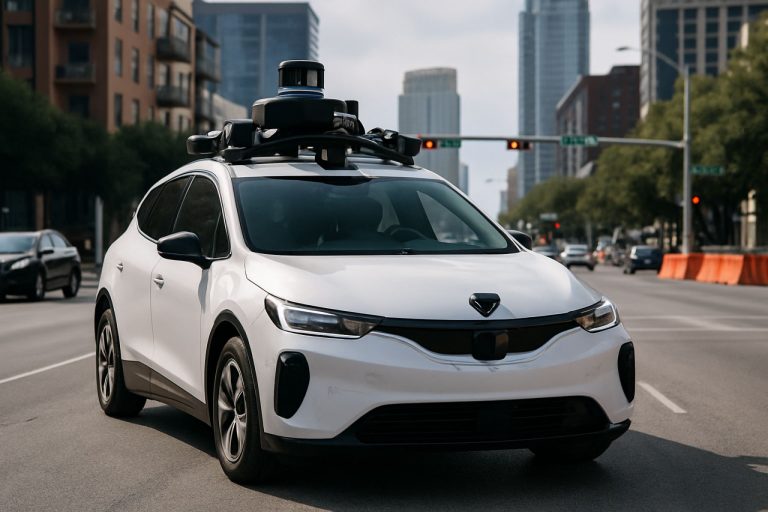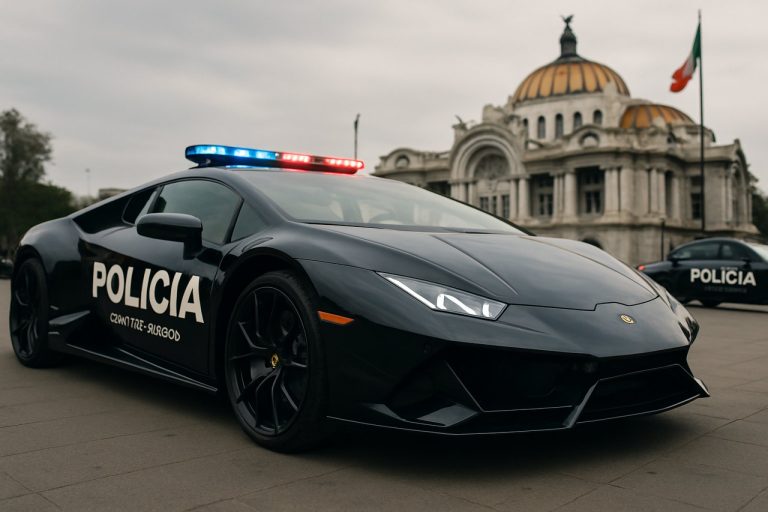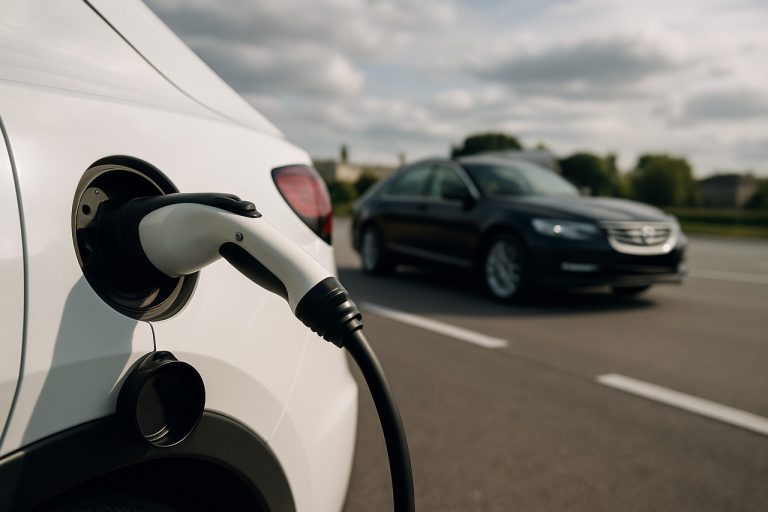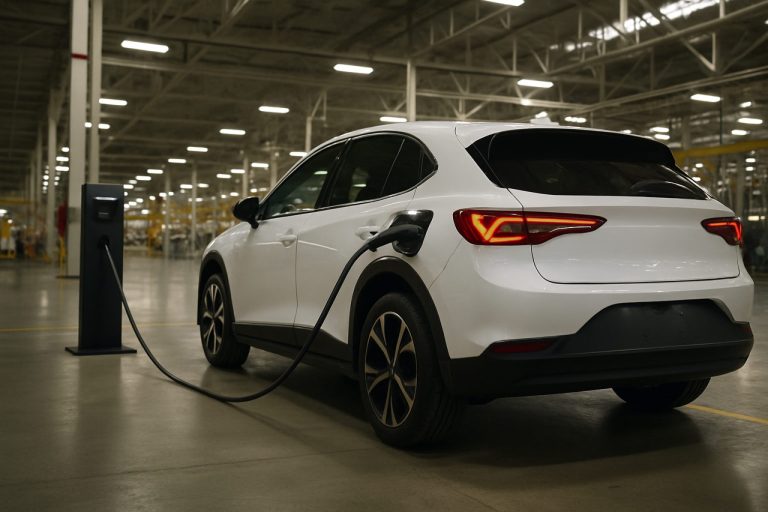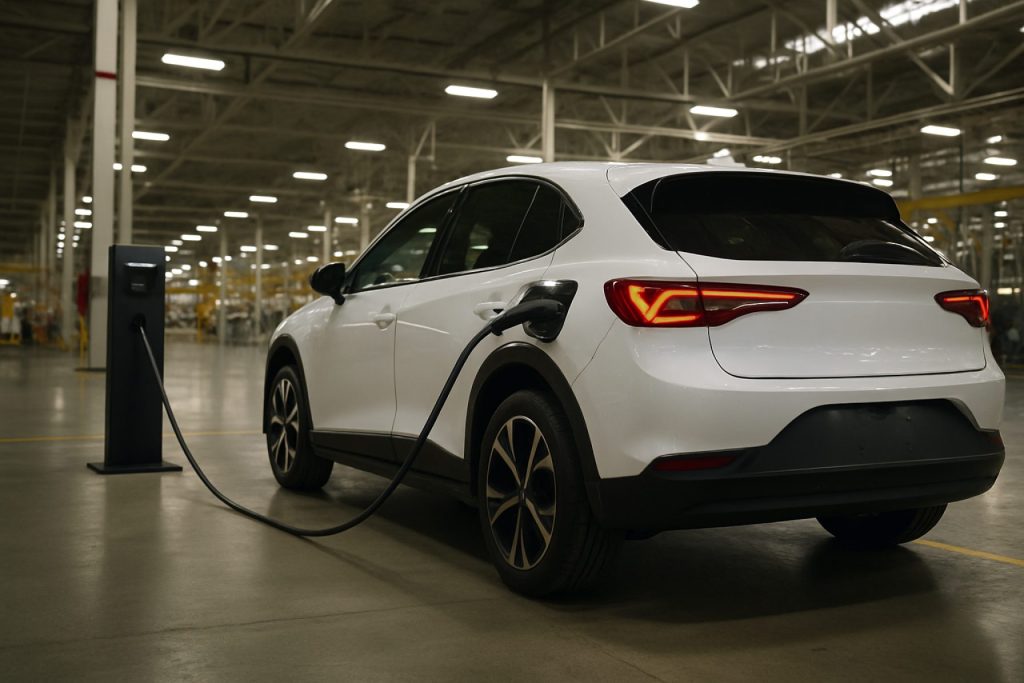
- Automakers are renewing focus on internal combustion engines and hybrids amid slowing global EV demand.
- General Motors is investing $888 million in a New York engine plant to launch new V8 engines by 2027, reflecting a pivot from full electrification.
- Electric vehicle sales in the U.S. have declined, impacted by reduced incentives and shifting government policies.
- Major brands like Toyota, Honda, and Volkswagen are scaling back EV targets and redirecting resources to engines and hybrid technology.
- Hybrid vehicles are gaining importance as a bridge solution, with manufacturers like Hyundai investing in flexible production strategies.
- High EV prices and the reduction of subsidies remain major barriers to widespread adoption.
A fresh gust rattles through the global auto industry as manufacturers reignite their passion for the internal combustion engine. Once propelling ahead on a highway of electrification, automakers now find themselves swerving back—fueling a renaissance of engines and hybrids as EV demand sputters worldwide.
At the heart of this shift, General Motors has stunned the market with an announcement: an $888 million investment in its Tonawanda engine plant in New York. The site had seemed destined for an electrified future, but those plans have shifted gears. By 2027, GM aims to roll out its sixth-generation V8 engines, breathing fresh life into muscular trucks and SUVs.
Numbers rarely lie. In the U.S., electric vehicle sales slipped 5.6% last month compared to the same period last year—a rare dip since 2021, according to research from Cox Automotive. Incentives that once nudged consumers toward EVs are drying up, particularly as political winds change. With new calls in Washington to roll back federal subsidies for electric vehicles, fossil fuel-friendly policies are tilting the landscape yet again.
The ripple effect crosses oceans. Toyota has trimmed its 2026 global EV sales target from 1.5 million to 800,000 units. Honda, too, has pulled back, aiming for EVs to make up just 20% of its 2030 sales—a significant cut from its earlier ambition.
Even Europe, once the gold standard for green auto policies, now applies the brakes. The European Union has postponed its stringent carbon emission penalties for three years after pushback from automakers, who warned of devastating losses—Volkswagen alone is steering six billion euros back toward engine development.
Meanwhile, hybrid technology is emerging as a pivotal bridge. The Hyundai Motor Group has thrown its weight behind next-generation hybrids, retooling its Georgia “Metaplant” to produce both electric and hybrid vehicles. This move acknowledges consumer hesitation about pure EVs, especially as battery costs and charging anxieties linger.
Price remains the stubborn barrier. Industry experts highlight that widespread EV adoption hinges on making electric models cheaper than their fuel-burning counterparts. With fewer subsidies and little sign yet of sharply falling production costs, the road to an all-electric future seems longer and windier than once expected.
As the future unfolds, some automakers are also rebalancing their business at home. GM’s Korean arm has announced the sale of several service centers and underused assets, a pragmatic move to bolster its sustainability—but it’s quick to quash rumors of a total exit, reassuring workers and partners that production plans remain on track.
The key takeaway? The science of propulsion is never static. Global carmakers are recalibrating their strategies—putting engines and hybrids back in the spotlight, at least until electric technology can catch up with the practical realities and economic expectations of everyday drivers. The dynamic shifts underway serve as a reminder: the journey toward cleaner mobility is a marathon, not a sprint.
For those tracking the fast-paced evolution of transport, stay tuned to Bloomberg and Reuters for the critical twists ahead.
Engine Comeback: Why Car Makers Are Slamming the Brakes on EV-Only Dreams
The Resurgence of Internal Combustion: More Than a Short-Term Detour
Recent headlines, including GM’s massive $888 million investment in its New York engine plant, confirm a global recalibration: Big auto brands are embracing a new hybrid reality as electric vehicle (EV) sales falter. But what’s really powering this industry shift, and what do consumers, investors, and regulators need to know?
Additional Facts & Deeper Contexts
1. Mixed Consumer Sentiment on EVs
– Charging Infrastructure Gaps: A 2023 JD Power study found that 49% of potential EV buyers in the U.S. were deterred mainly due to insufficient charging stations—not range, but confidence they can plug in anywhere, anytime.
– Battery Supply Chain Hurdles: The International Energy Agency (IEA) reports that global battery materials (notably lithium and nickel) face volatile pricing, further delaying cost parity with combustion models.
2. The Hybrid Boom—A Real-World Bridge
– Hybrid Sales Surge: Toyota’s 2023 U.S. hybrid sales shot up 30% year-over-year, even as their EV targets shrank. Honda and Ford also reported surges in hybrid demand, especially for family SUVs and crossovers.
– Tax Credits for Hybrids: Legislators in several U.S. states are pushing for broader tax credits on fuel-efficient hybrids, including plug-in hybrids (PHEVs), since they require less lifestyle change than full EVs (source: Bloomberg).
3. Engine Tech Innovations
– Eco-Friendly Combustion: GM and others are experimenting with cleaner fuels (like synthetic e-fuels and bio-blends) to keep new V8s and other engines compliant with tightening standards.
– Longevity & Repairs: Internal combustion engines remain cheaper and simpler to repair in much of the world, ensuring high resale value and enduring appeal, especially in rural regions.
4. Market Forecasts and Trends
– Global Market Share: EVs represented just 18% of global new car sales in 2023 (IEA), with hybrids accounting for nearly as much.
– Forecasted Hybrid Upswing: Industry watchers from S&P Global Mobility expect hybrid sales to nearly double over the next five years, outpacing EV growth outside China.
5. Europe’s Regulatory “Brake Tap”
– 2035 Ban in Jeopardy: Europe’s plan to ban new ICE sales by 2035 faces mounting legal and political pressure. Major countries like Germany and Italy are considering exceptions for synthetic fuel-powered vehicles.
6. Security, Sustainability & Controversies
– Energy Grid Strain: Widespread EV adoption could stress electricity grids, especially in peak seasons. Hybrids offer a compromise, lessening the immediate need for major infrastructure upgrades.
– Resource Sustainability: Mining required for EV batteries is criticized for environmental damage and reliance on rare minerals, many sourced from geopolitically sensitive regions.
– Consumer Protections: With fluctuating policies, the depreciation of EVs versus long-proven combustion and hybrid models remains controversial.
Most Pressing Questions—And Answers
Q: Will new engine investments slow innovation in electric technology?
A: Not necessarily. Major carmakers are hedging: funneling profits from combustion sales into battery R&D while meeting current market demand (source: Reuters).
Q: Are hybrids better for the environment than modern clean diesel or gasoline cars?
A: Generally, yes. Full and plug-in hybrids dramatically cut CO2 for urban and mixed-use driving; they’re especially efficient for commuters and stop-start traffic.
Q: Will EV prices drop soon?
A: Not without breakthroughs in cheaper batteries and simplified manufacturing. Most experts predict affordable mainstream EVs by 2027–2028 at the earliest.
Q: Can biofuels or e-fuels save combustion engines long-term?
A: Promising for niche and luxury segments, but cost and scale are hurdles for mass adoption. Expect new regulations to favor hybrids before pure e-fuels see mass market traction.
Practical How-To: Your Car Buying Playbook
1. Map Your Mileage: Hybrids excel below 60 miles/day and mixed rural-urban use; high-mileage drivers should calculate lifetime fuel and maintenance difference.
2. Research Local Incentives: Some regions still offer generous hybrid and partial EV credits (check state DMVs and reputable platforms like Bloomberg).
3. Consider Total Cost of Ownership: Factor in fuel, insurance, maintenance, and potential battery replacement for EVs or hybrids.
4. Stay Informed: Policy shifts happen quickly. Subscribe to industry news at Reuters for up-to-date changes in incentives, bans, or new tech.
Pros & Cons: Combustion vs EV vs Hybrid
| Aspect | Combustion | Hybrid | EV |
|———————–|——————|———————–|———————|
| Upfront Price | Lowest | Slightly higher | Highest |
| Running Cost | High (fuel) | Moderate (fuel/elec) | Lowest (elec) |
| Emissions | Highest | Moderate–Low | Zero (tailpipe) |
| Refueling Speed | Minutes | Minutes (gas) | Hours (charging) |
| Maintenance | Simple/known | Moderate | Lower, but costly if repairs needed|
| Range Anxiety | None | None | Present (for some) |
Quick Actionable Recommendations
– Shop hybrids for the best real-world ROI and eco-credentials.
– Delay EV purchase unless you qualify for large incentives, drive mostly urban, and can charge at home.
– Follow industry leaders’ updates and wait for 2027 engine and hybrid innovations from GM, Toyota, Hyundai, and others.
– Keep abreast of local and federal policy—your future resale value or eligibility for credits could change fast.
—
Final Insight: The pendulum is swinging back to the middle. While the allure of a fully electric future grabs headlines, the reality for most drivers and businesses is pragmatic: Hybrids and new, cleaner combustion engines will dominate for several more years. Smart consumers and investors should watch for policy updates, tech breakthroughs, and new model launches from mainstays like GM and Toyota—information reliably covered at Bloomberg and Reuters.
